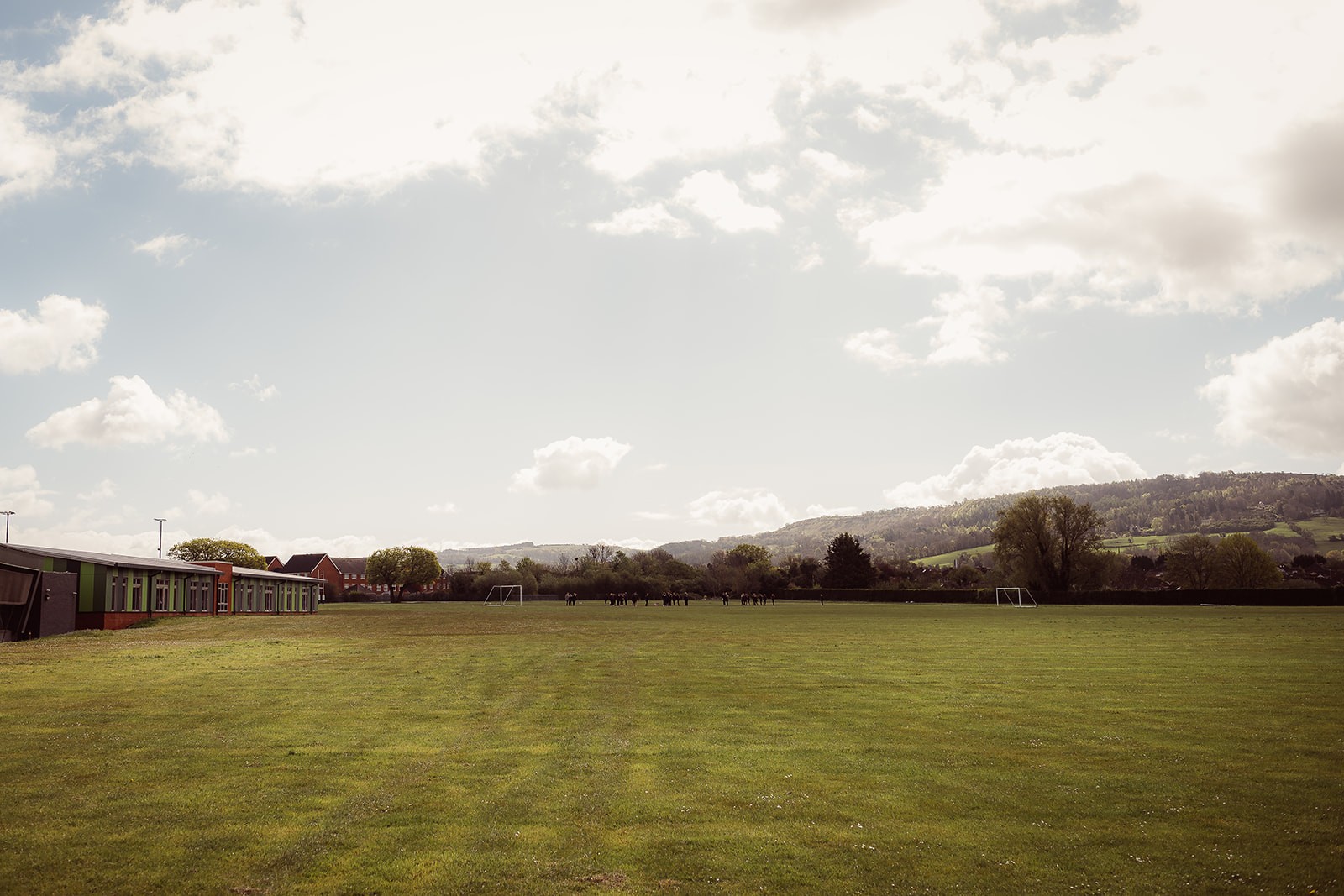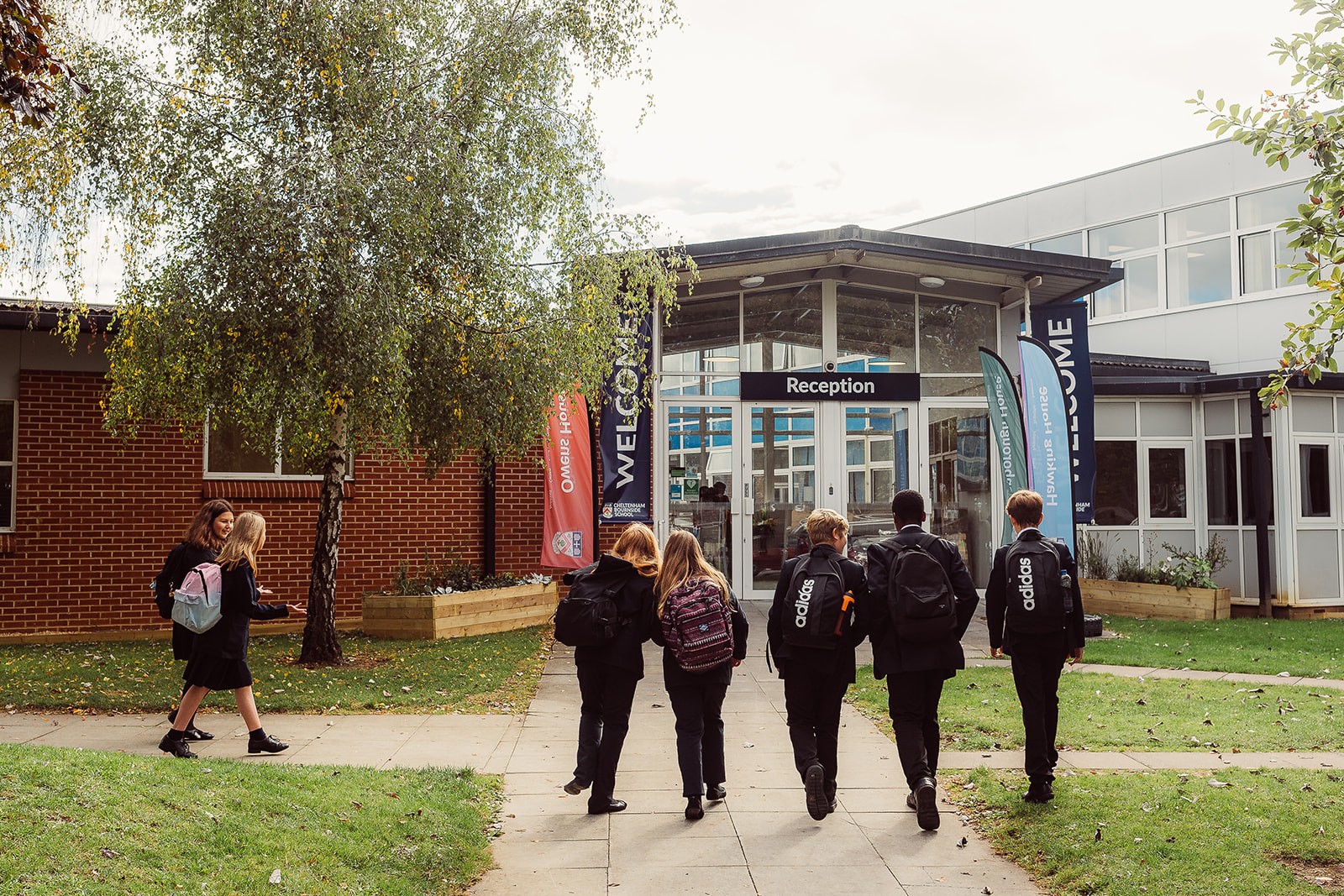Cheltenham Bournside School secures significant CIF funding to decarbonise heating system and reduce carbon footprint
26 Apr
We are embarking on an ambitious project to decarbonise our heating system by replacing aging fossil fuel boilers with Ground Source Heat Pumps (GSHP).
Funding for the project has been successfully secured through the Government’s Condition Improvement Fund (CIF) following a competitive tender process where the project has been proven to be cost-carbon effective and can be delivered by a school with strong governance and effective financial management, which are the scheme’s primary requirements. CIF funding is separate and in addition to the school’s standard annual budget.
We have partnered with Cotswold Energy Group (CEG) as the principal contractor on the project. CEG, based in Stonehouse, are a renewable energy specialist who have a wealth of experience in public sector decarbonisation.
The GSHP will be fed by a borehole field to the south of the site on the playing fields where preliminary works are already visible. These 73 boreholes will contain over 10km of heat collector pipework. This project also encompasses a Solar PVT (Photovoltaic Thermal) installation to compliment the GSHP installation. These solar panels will not just create electricity to help run the GSHP system but will also create hot water to help recharge the natural heat we are extracting from the ground.
Steve Jefferies, Headteacher, said: “We are pleased to have secured CIF funding to substantially upgrade our facilities, whilst simultaneously reducing our carbon footprint. Cutting-edge technologies such as GSHP and Solar PVT will be used in what is believed to be the biggest project awarded and so we hope to lead by example on the effective decarbonisation in the education sector.”
“We intend to make the most of delivering a project of this scale on site by creating a complimentary offshoot of educational resources including eco energy displays and Inspire Lectures, potential degree apprenticeship opportunities and ongoing project engagement with our students, their families and our community. This starts with a series of assemblies next week.”
Jon Bonnar, Managing Director of Cotswold Energy Group said, “It’s a great pleasure to be able to partner with local forward-thinking organisations and make a meaningful impact to the local community, we have several staff members who went to school at Bournside which makes this project that little bit more special.’’
FAQs
What is a Ground Source Heat Pump (GSHP)?
A GSHP is a heating system that uses the earth’s natural heat to provide energy-efficient temperature control. By circulating a fluid through pipes buried underground, the GSHP extracts heat from the ground in the winter to warm the building.
How does a GSHP work?
GSHP systems involve an underground network of pipes, called a ground loop, and a heat pump at the surface. The system circulates a water-based solution through the ground loop, which absorbs heat from the ground in the winter and rejects heat in the summer (if programmed for cooling). The heat pump then uses electricity to increase the temperature of the absorbed heat to warm the building.
What are the benefits of installing a GSHP system in a school?
GSHP systems offer several benefits, including significant energy savings, lower carbon emissions compared to traditional heating systems, minimal maintenance, and a long lifespan. These systems provide a stable and comfortable learning environment, as they efficiently manage the school’s heating and cooling needs.
Why was a GSHP system chosen for Bournside School?
The decision to install a GSHP system at the school was made to reduce the school's carbon footprint, cut energy costs, and demonstrate a commitment to sustainable practices. The system’s ability to efficiently handle large-scale heating demands made it an ideal choice for an educational facility.
How long will the installation process take, and will it disrupt school activities?
The installation timeframe can vary, but typically, efforts are made to minimize disruption to school activities. Much of the intensive construction work will be scheduled during off-hours or school holidays. The project team will coordinate closely with the school to ensure that the school environment is maintained safely and without significant interruptions.
What will happen to the fields?
The installation of the boreholes will not affect the long term use of the field. It will be re-instated to a useable condition. The design considers the most appropriate location for the manifold chambers (look like manhole covers from the surface), to site them on the outside of the usable field space. The expected date for re-use of the field is circa Spring 2025.



